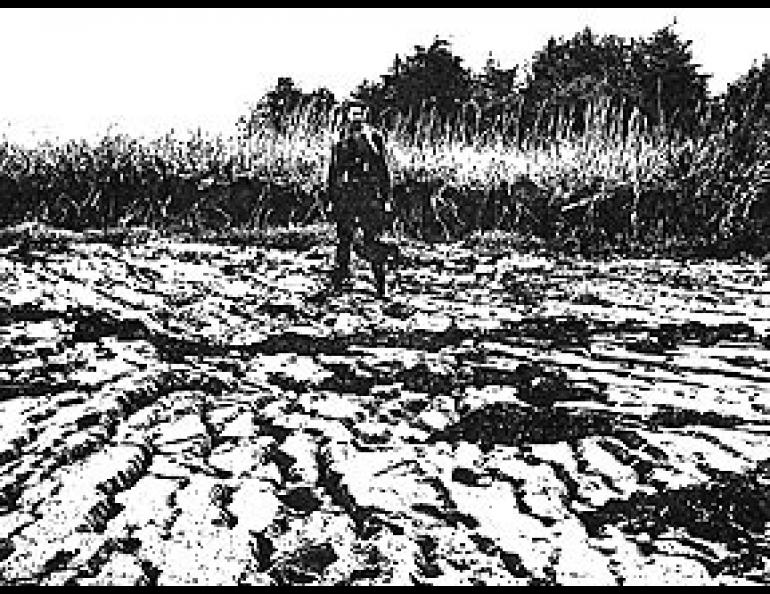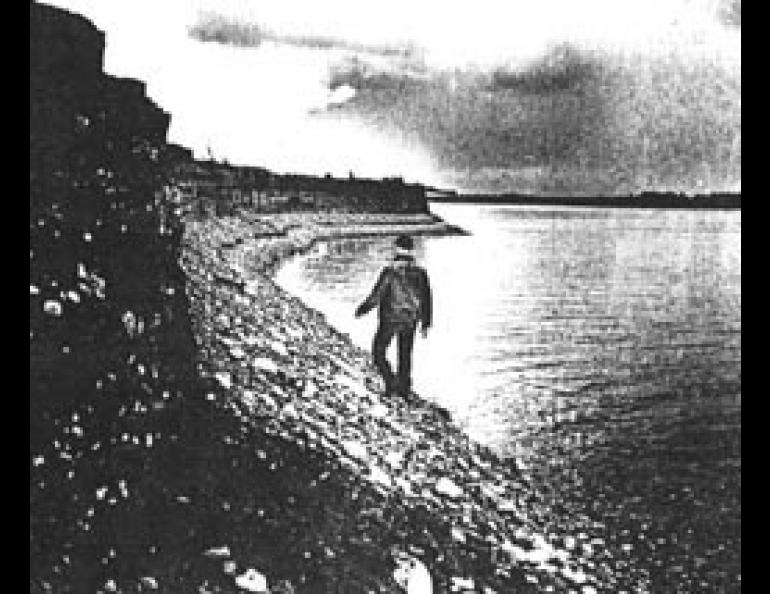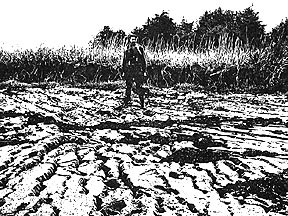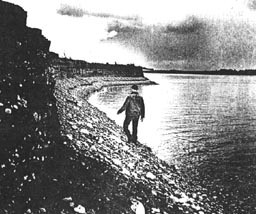

Khantaak Island
When great destructive earthquakes strike heavily populated areas it comes as no surprise that hundreds or thousands of people are injured or killed. But when great earthquakes happen in unpeopled areas the few deaths that sometimes occur can seem like strange twists of fate.
So it was with three Yakutat, Alaska residents standing on Khantaak Island, just 2 miles across the sheltered Morti Bay from the town. Mrs. Jeanne Walton and Mr. and Mrs. Robert Tibbles had landed on the tip of the island to pick wild berries. Accompanying them in another small boat were the Yakutat postmaster and his wife, Mr. and Mrs. John Williams. The date was July 9, 1958.
About 9:30 p.m. the Williamses decided to leave for home; Mr. and Mrs. Tibbles and Mrs. Walton decided to stay a while longer. They waved goodbye and the Williams' boat left to run back to Yakutat. A few minutes later Mrs. Williams saw trees on the island whipping back and forth. She looked back toward the beach they had just left only to find that it was hidden behind a wall of water rushing away from the beach toward the Williamses boat. Mr. Williams gave the boat full throttle and outran the wave until its height was no longer dangerous. But when the wave subsided, the beach was gone.
As far as is known, the three people were standing on the gently sloping shore near their beached boat when the first seismic waves arrived from an earthquake centered a hundred miles away beyond Lituya Bay, to the southeast. Suddenly the ground beneath their feet fell away and plunged more than a hundred feet below the sea. Though no survivor actually saw the collapse, several persons around Monti Bay viewed the spot within the next few minutes. Where the tip of Khantaak Island had been they saw "heavy black, boiling water". It "looked alive, boiling". Later the heavily damaged hull of the Tibbles boat was found floating submerged near where it was last seen by the escaping Williams couple. The three on the beach were never found.
Why did a half million or more cubic yards of earth sink below the sea? The immediate cause of this peculiar event was the shaking of the unconsolidated sands and gravels that form portions of the bottom and shores of Yakutat Bay. Below sea level these water-saturated materials quickly lose their load-bearing strength when vibrated by seismic waves.
The shallow floor of Monti Bay, near the tip of Khantaak Island where Mrs. Walton and Mr. and Mrs. Tibble stood, simply slid away toward the deeper water. Unsupported, a strip of land 50 by 150 yards fell into the bay creating the wave that chased the Williamses to shore. It is likely that a sizable submarine slide occurred since the tip of the island fell vertically about 120 feet (40 meters).
This is not the only known instance of substantial bottom changes in Yakutat Bay during an earthquake. Following the February 28, 1979 earthquake just north of the bay, decreases in charted depth by as much as twenty feet were reported, presumably the result of underwater slides such as the one earlier in Monti Bay. A special notice to mariners was put out warning extreme caution when navigating Yakutat Bay since the full extent of bottom changes were not fully known.






